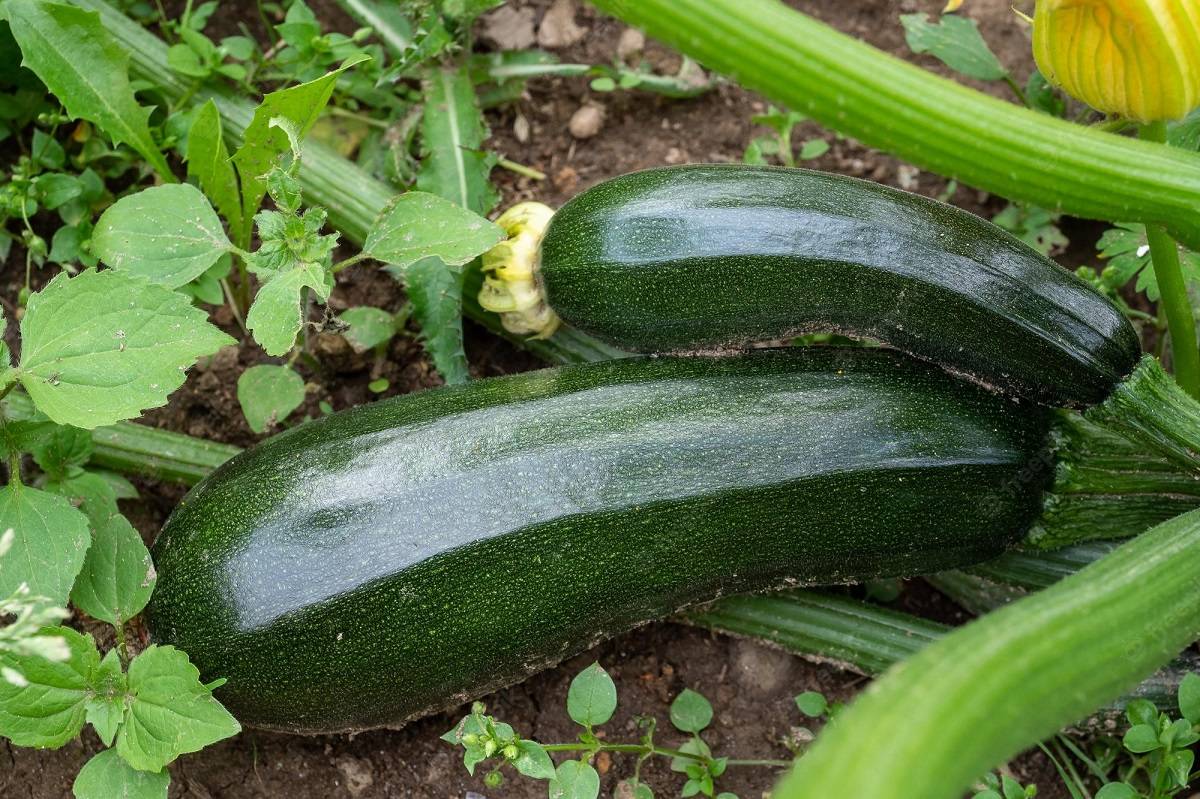
One of the easiest garden veggies to grow is zucchini. Growing this crop may provide ambitious spring gardeners a speedy reward because of its quick development rate (some zucchini cultivars mature in as less than 45 days). Zucchini typically need very little care beyond a regular harvest as long as they have moderate fertility and a consistent supply of moisture.
But zucchini plants can encounter some serious difficulties when prolonged droughts, rainy summers, insects that transmit illness, or diseases that live in the soil take hold. Some diseases of zucchini plants might cause them to produce considerably fewer fruits or even die. Others have the potential to spread to relatives of Cucurbits including cucumbers, squash, and melons. Let's examine the most prevalent zucchini pests and diseases in your garden and learn how to recognize, stop, and cure them.
Common Zucchini Pests and Diseases
Check out the pests and diseases that can harm your zucchini plants;
1. Aphids:
One of the most prevalent garden pests is the aphid, and zucchini plants are also attacked by these sap-sucking insects. Depending on the species, these small 1/8-inch-long beetles might be black, red, green, yellow, brown, or pink. A group of green aphids feasting on a green leaf in close-up. They often lack wings and have pear-shaped bodies with lengthy antennae.
Aphid damage to zucchini plants can result in stunted growth or curled, yellowing, mottled, or dry leaves. Aphid honeydew can result in sooty mold and attract ants in addition to these negative effects. Due to their small size, you might not notice them until you have a significant infestation or you detect damage to your plants.
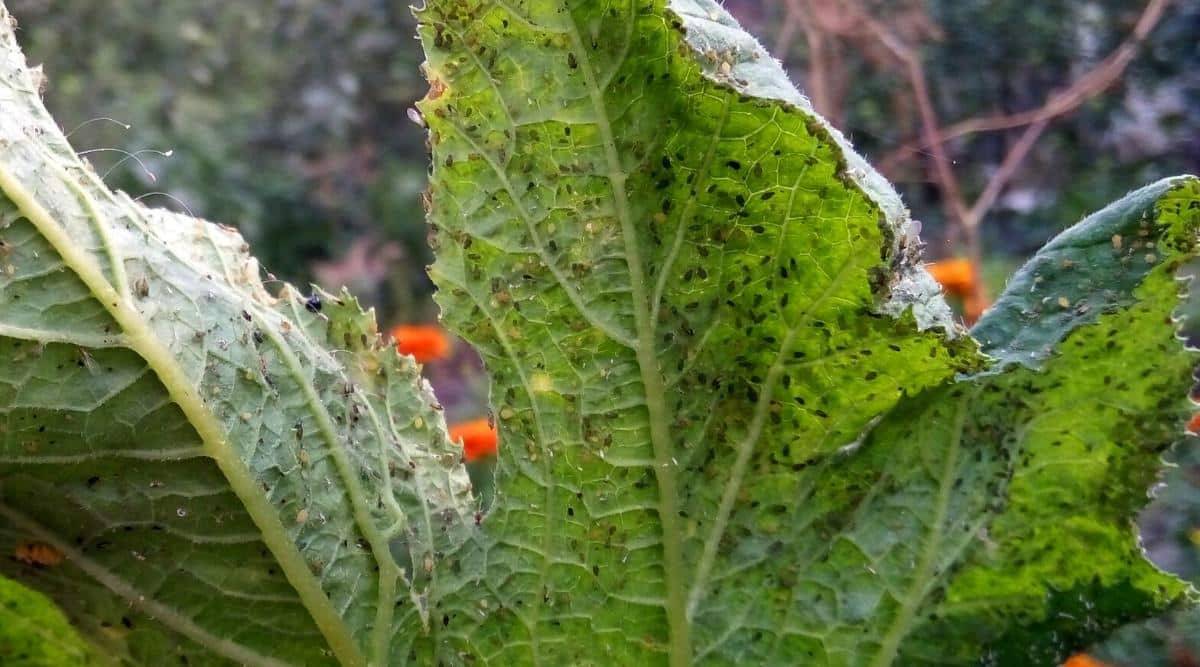
Prevention:
Check your plants frequently for early breakouts to prevent issues. Stems with aphid clusters should be cut off and composted. The key aphid predator’s lady beetles, syrphid flies, and lacewings should be encouraged.
Managing Outbreaks: A high-pressure spray from the garden hose can assist in eradicating aphids from plants in minor outbreaks. Apply insecticidal soap twice more, each time waiting a week between applications. Apply the soap spray liberally to leaf crevices and undersides.
The larvae of lady beetles are wonderful helpful insects to welcome into your garden. Ant activity frequently points to aphid colonies because ants are drawn to the honeydew that aphids leave behind.
2. Striped Cucumber Beetle:
Less than a quarter of an inch long, striped cucumber beetles have three black stripes across the length of their wing coverings. The Western adaptation is a little bigger.
After emerging in the late spring, striped cucumber beetles start their damage by eating cucumber, melon, and squash seedlings right once. Females deposit their eggs close to the base of plants, and the larvae eat the roots of those plants. Populations soon increase, and the beetles inflict further harm to plants by eating flowers and spreading the bacterial wilt disease, which makes plants wilt and die.
Prevention:
Plants like radish, catnip, buckwheat, and borage attract a variety of beneficial insects that can help reduce cucumber beetles. The most trustworthy plant protection is floating row coverings. It frequently helps to postpone spring planting by two weeks.
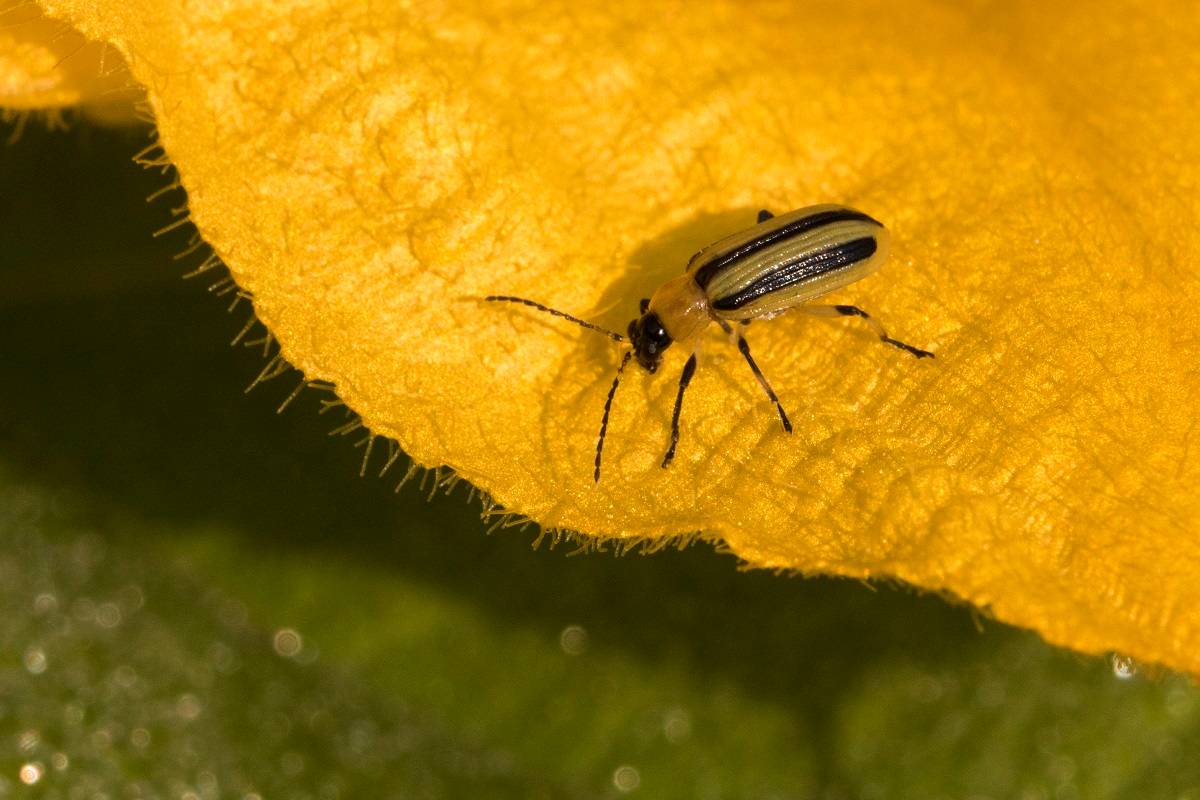
Managing Outbreaks: Striped cucumber beetles are tiny and prone to flying away, making hand-picking them difficult. Place a piece of cardboard beneath plants on cold mornings to catch any bugs you knock to the ground. To make it simpler to gather any bugs grouped in blooms, you may also apply petroleum jelly to the fingertips of a yellow rubber glove. Cucumber beetles may be easily collected with a tiny vacuum.
Since harmful systemic insecticides are typically used in traditional cucumber and melons production, organic pest management is time and effort well spent. Growing cultivars like "Little Leaf" and slicing cucumbers, which lack the bitter gene and are less alluring to cucumber bugs, is another option.
3. Squash Bug:
Squash bug adults are huge, gray-mottled stink bugs about the size of a fingernail. Adult squash bugs can fly, although they are most frequently found hiding amid squash leaves in search of mates. On leaves, females deposit clusters of reddish-brown eggs, which hatch into juvenile squash bugs with black legs and gray bodies that move quickly. Young squash bug nymphs frequently feed in packs on ripening fruits or the undersides of leaves.
Squash bugs feed on the sap and fluids of pumpkin and squash plants, causing damage with their pointed, sucking mouthparts. Squash bug eating can destroy early fruits and produce ragged holes in leaves when it is excessive. Unchecked feeding makes plants frail and causes them to stop producing.
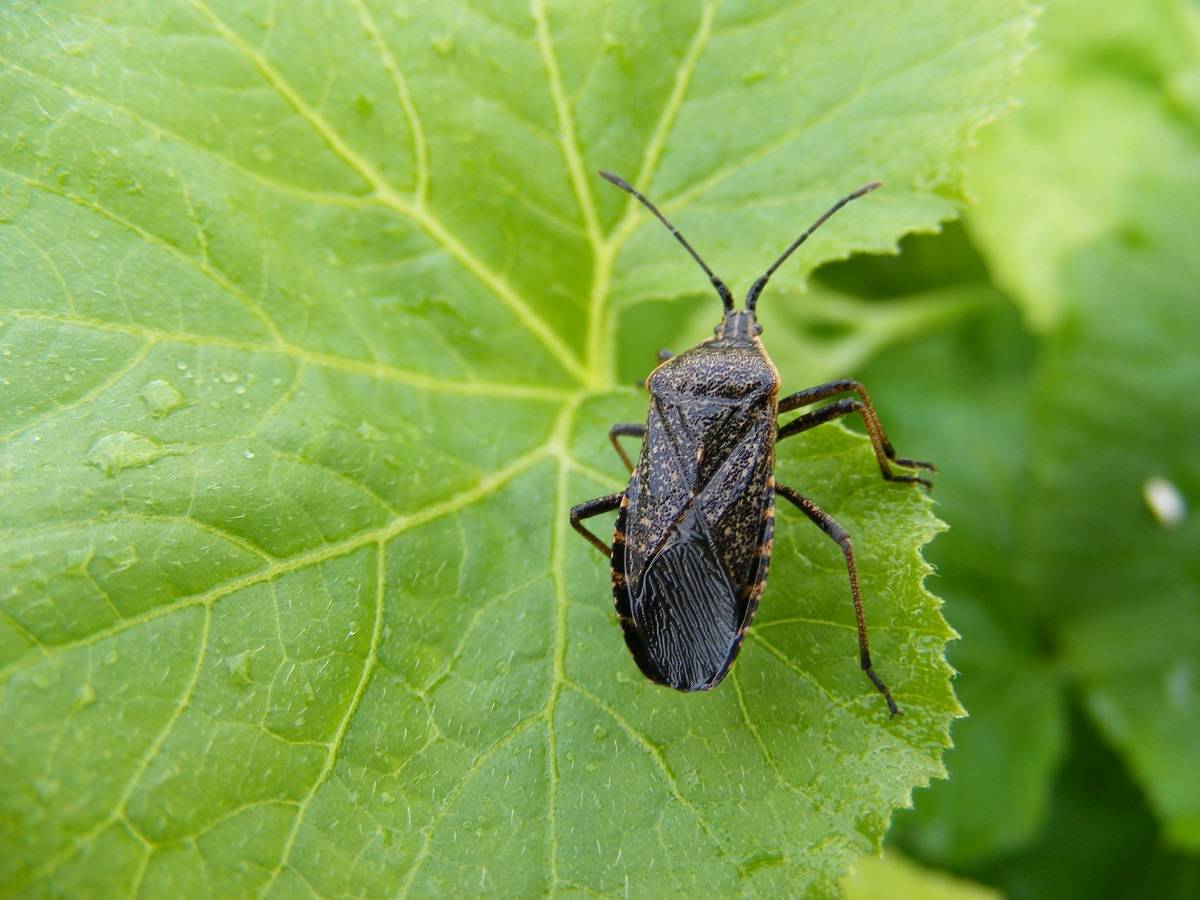
Prevention:
You may lessen squash bug issues by delaying the planting of your primary crop of squash until early summer. High-quality zucchini can also be used as a trap crop. In the summer, inspect foliage on all squash and pumpkins for squash bug eggs twice a week, and remove them with a moist cloth or a table knife. Crickets and ground beetles mistakenly consume eggs that fall to the ground as weed seeds.
4. Powdery Mildew
Numerous fungi (Podosphaera xanthii, Erysiphe cichoracearum & Sphaerotheca fuliginea) can be the cause of powdery mildew. It often appears in late summer for most zones and thrives in warm, humid environments. The leaves give the appearance of having been dusted with flour.
Prevention: Maintaining a healthy number of weeds in the region can help avoid powdery mildew. To increase circulation, use a sharp knife to trim the bottom leaves off the stem. It may assist to grow vertically and trim back some leaves.
With cultural practices that maintain ventilation and circulation, this mildew may be readily avoided. Watering from the base is the most vital preventive measure. Zucchini shouldn't be overhead-irrigated (or any squash for that matter). Rainfall and water splashing up from the earth are two ways that powdery mildew spreads, so keeping the leaves dry with drip irrigation or soaker hoses is essential.
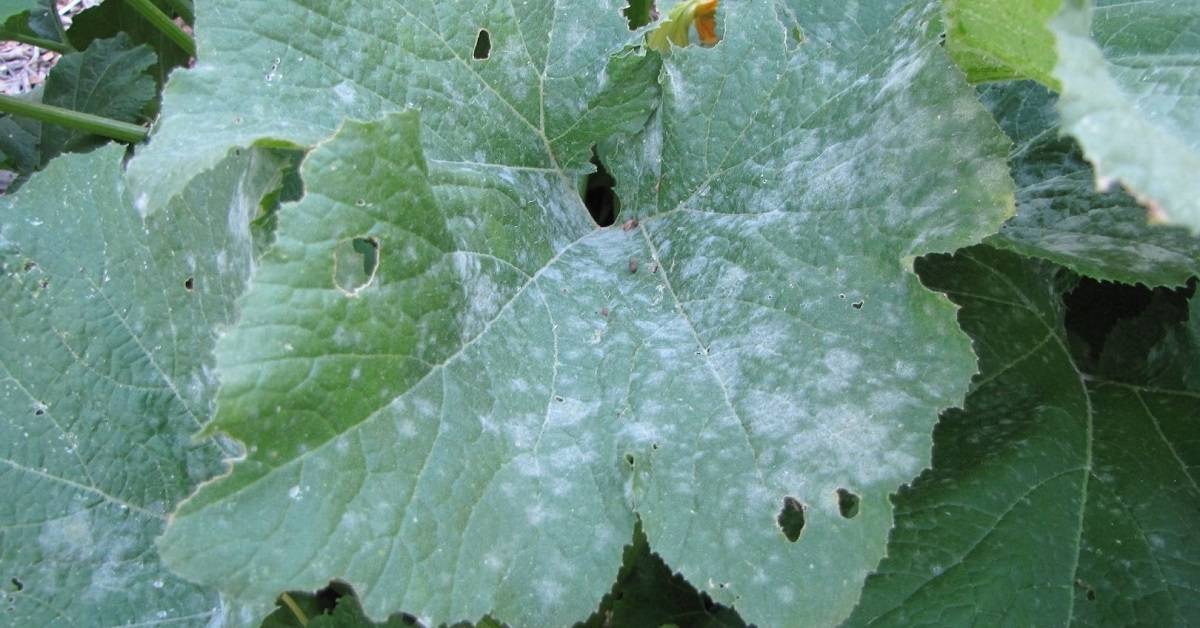
Treatment: Don't freak out if your zucchini leaves get powdery mildew in the late summer. The simplest solution is to clip off contaminated leaves and throw them away in the garbage while being careful not to spread the spores. To limit the spread and stop future infection, you can also clean the leaf surface with a diluted neem oil solution.
5. Downy Mildew
In contrast to powdery mildew, which resembles dust, downy mildew is blotchy and yellow. It usually starts or finishes in the chilly, damp months at the start or conclusion of the season.
A fungus belonging to oomycete, which is closely linked to algae, is what causes downy mildew. To spread, they require water.
Prevention: To spread, downy mildew needs wetness on the leaf surface. This implies that the key to success is to keep water droplets off the leaves. Avoid overhead irrigation (instead, use drip or soaker hoses). To increase airflow, plant zucchini later in the season and space them farther apart. To attempt to prevent rain from falling on the leaf surface, you may also grow zucchini in greenhouses or low tunnels.
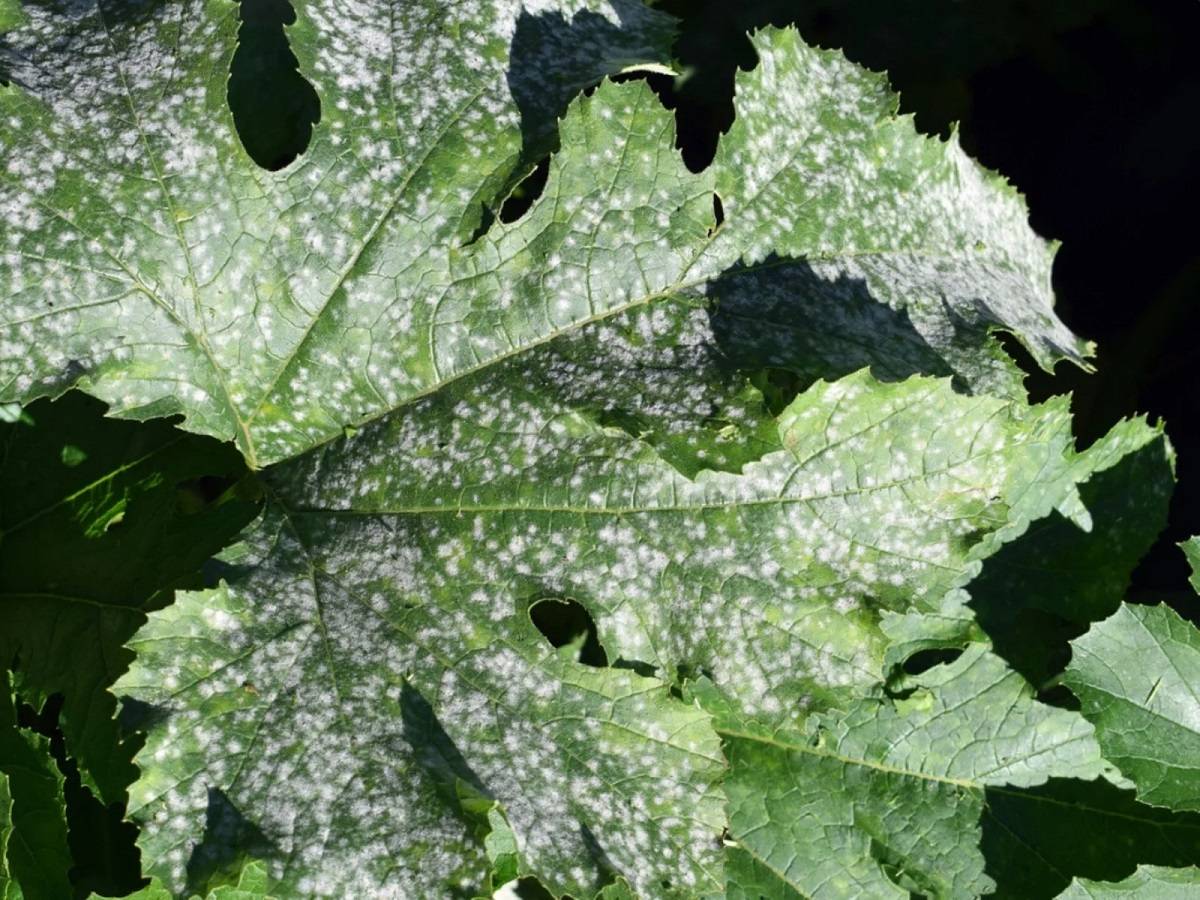
Treatment:To eliminate downy mildew and stop future infection, apply a diluted neem solution or organic fungicide on minor infestations. However, it's normally advisable to take the entire plant and discard it if it's the end of the season and the plant has been highly infested. Avoid handling in windy areas or using plant waste as compost, as this can spread more pathogens to the adjoining crops.
6. Alternaria Leaf Blight
Alternaria cucumerina, another typical zucchini disease, is an aggressive fungus that affects both cucurbits and brassicas. It survives the winter on diseased crop detritus and grows well on wet leaf surfaces.
It is simple to distinguish because of its distinctive "bullseye" or "shot-hole" look.
Prevention: Only water plants from the base and avoid overhead irrigation. To stop water from splashing on the leaves during heavy rain, consider covering plants. Always clean up the garden after harvesting the zucchini crop. Neem solution diluted for foliar spraying may also be helpful to stop infection.
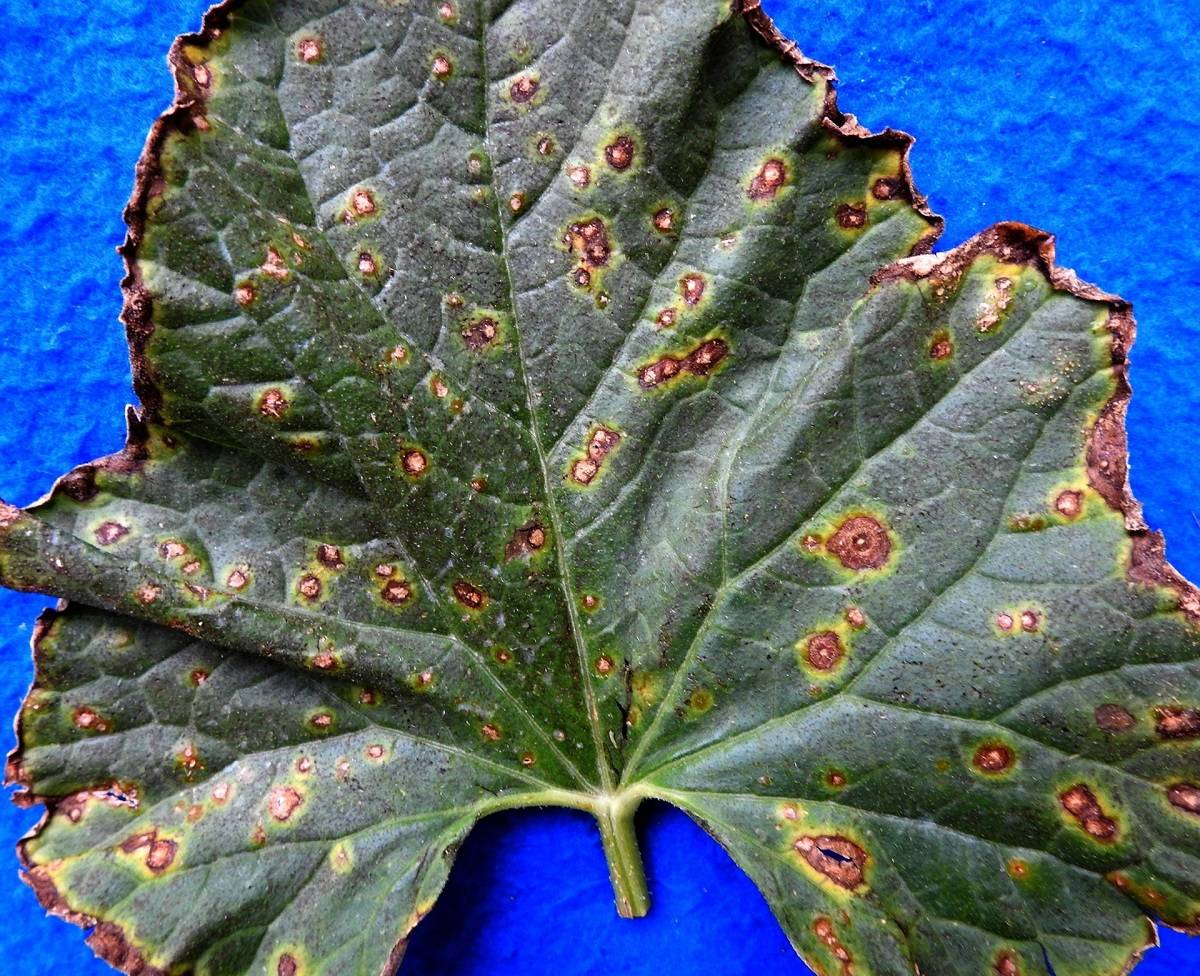
Treatment: For Alternaria Leaf Blight, several organic fungicides can be helpful, including Equisetum (horsetail) tea, compost tea, copper sprays, and bio-fungicides like Bacillus subtilis. As directed on the packaging, apply straight to the leaves. Additionally, clipping sick leaves off at the root and throwing them in the garbage is the best course of action.












